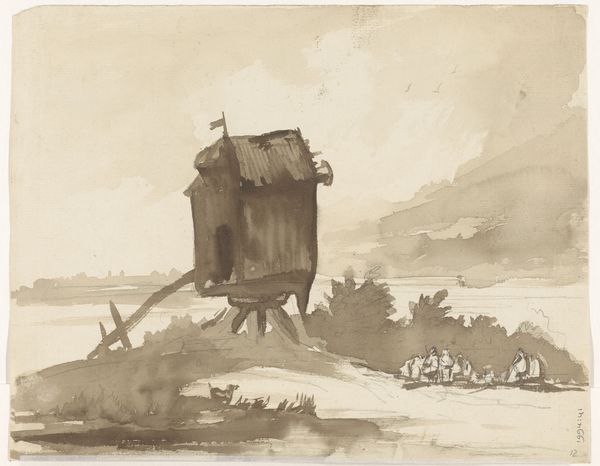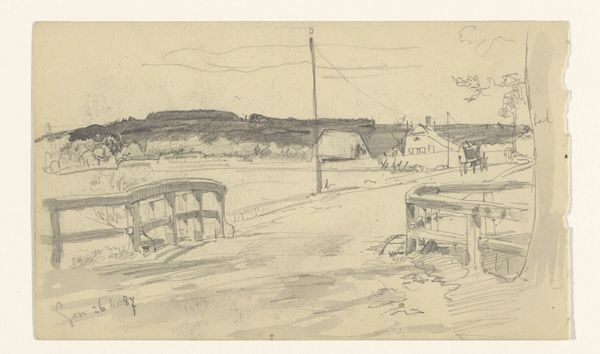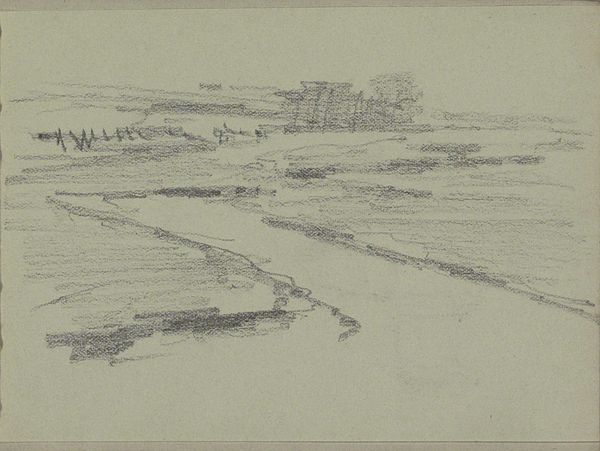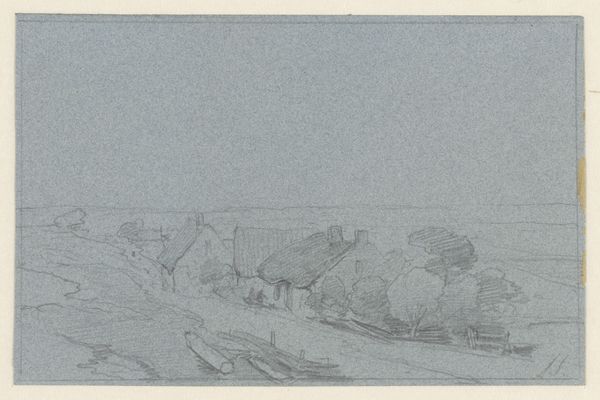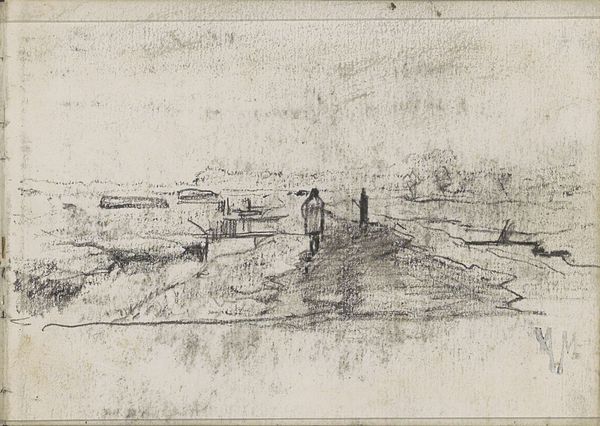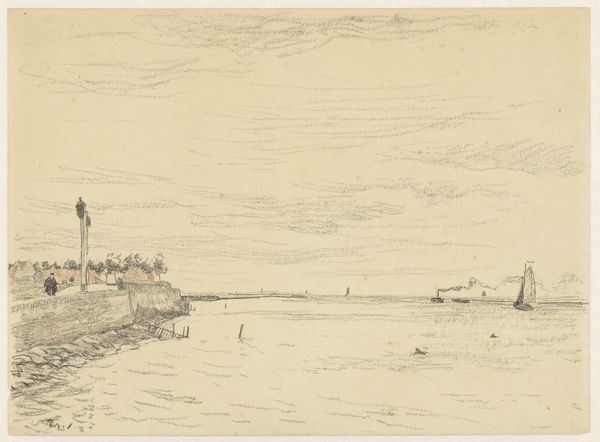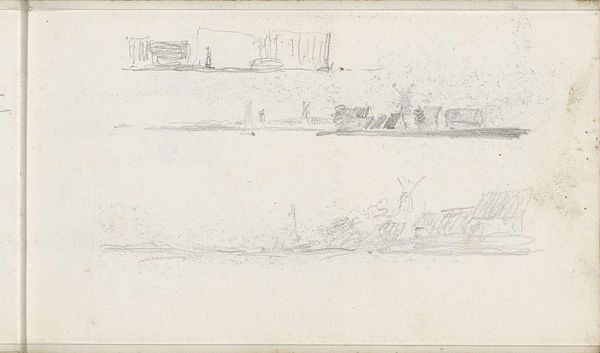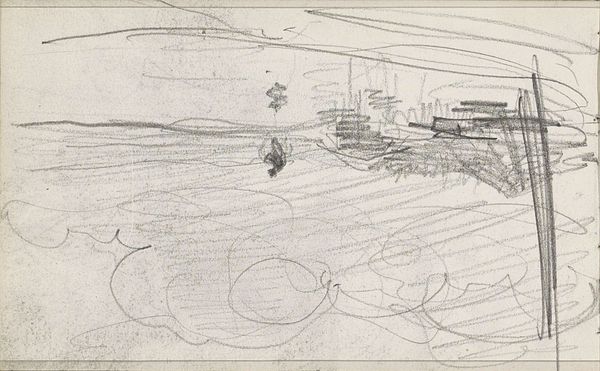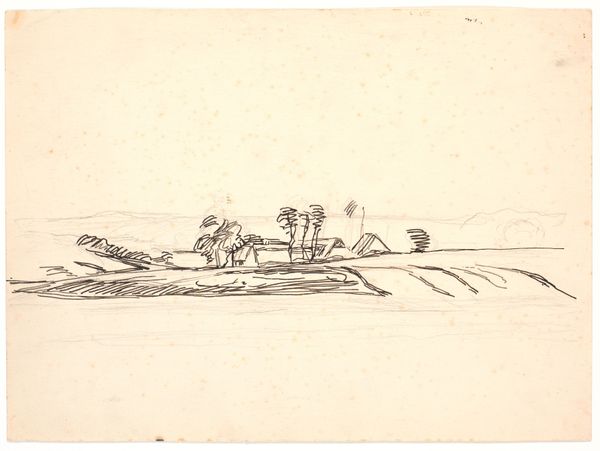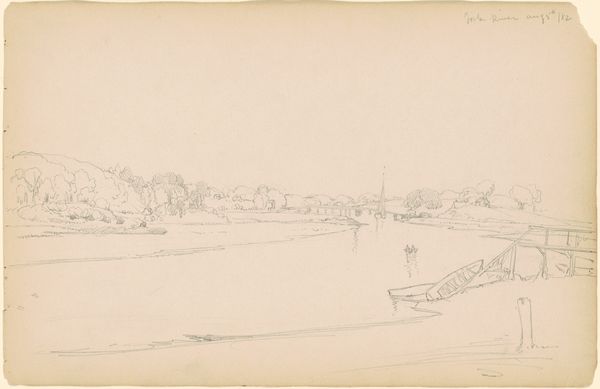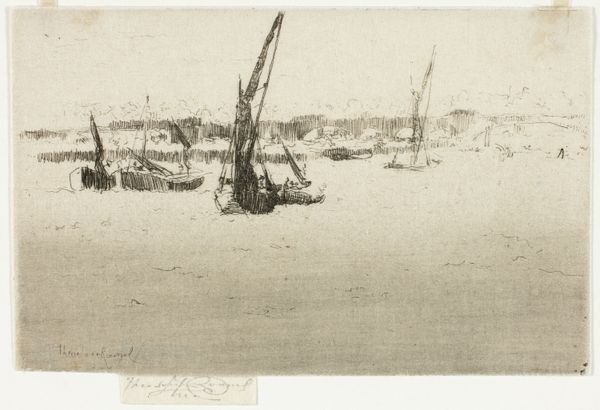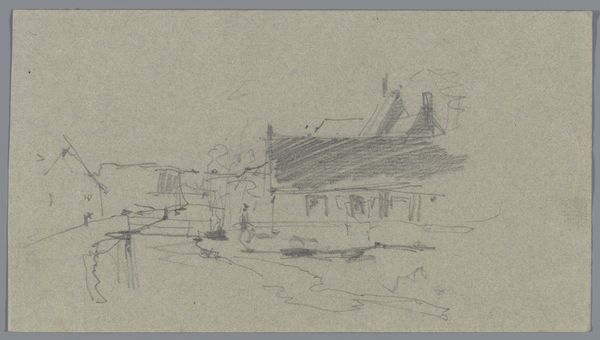
drawing, pencil
#
drawing
#
pencil sketch
#
landscape
#
pencil
#
realism
Dimensions: height 160 mm, width 256 mm
Copyright: Rijks Museum: Open Domain
Curator: Welcome to this audio guide. We’re looking at a pencil drawing titled "Schets van een landschap met kar" ("Sketch of a Landscape with Cart") made sometime between 1865 and 1922 by Suze Robertson. Editor: It feels stark, almost desolate. The limited tonal range and swift lines suggest a transience, a fleeting moment captured in pencil. What’s striking is the concentration of the sketch’s focus on labor. Curator: Precisely. Note how Robertson uses a constrained palette to emphasize form. The composition is structured by the receding line of the road, directing the eye toward the carts and the distant horizon. It is economical; line dictates form. Editor: But I see more than just formal economy. These aren't romantic pastoral idylls. The heavy carts, the implied physical effort – this visual language speaks to the lived experiences of the working class. The image encapsulates their reliance on both landscape and on often backbreaking manual work for sustenance and survival. Robertson painted in an era defined by massive disparities between laborers and the owners of capital. I don't believe this picture lacks for social context, and it's not a stretch to argue for an overt awareness. Curator: While your sociopolitical reading is viable, one cannot dismiss the beauty of Robertson's draftsmanship, her manipulation of light and shadow achieved through incredibly fine lines. Consider the detail in the rendering of the nearest cart – it showcases a mastery of perspective. Editor: But aren’t these technical skills inherently connected to how society views labor? The romanticized landscapes of her contemporaries often sanitize or completely exclude the working classes. Robertson's inclusion, even in a seemingly straightforward sketch, reflects a shift towards social realism and represents the silent presence and vital contribution of the most downtrodden. Her choice to focus so intensely on the vehicles is not a choice to exclude that historical, social perspective, but, instead, to implicitly foreground them. Curator: That's a strong claim, and thank you for pointing that out! Her use of the medium enhances this reading by emphasizing the utilitarian reality of her subjects with raw clarity and economy. This is certainly how her art allows viewers to find beauty. Editor: Indeed. I appreciate how viewing this artwork compels us to contemplate about representation. Curator: Ultimately, regardless of interpretation, Robertson's landscape continues to compel with its subtle sophistication.
Comments
No comments
Be the first to comment and join the conversation on the ultimate creative platform.
